When the shelves are bare and the grid’s down, a stash of beans and rice won’t cut it. You need real food, the kind that keeps you strong and healthy. Even in good times, getting fresh, wholesome food straight from the source is a win. That’s where cow sharing comes in, a clever (and sometimes under-the-radar) way to lock in top-notch meat and dairy all year round, not just when things go south.
If you’re serious about prepping or just want better food while supporting local farms, cow sharing could be a game-changer for keeping your family fed and ready for anything. Let’s walk through it step by step to see if it fits your daily life and your survival plan.
What Is Cow Sharing?
Cow sharing is one of those under-the-radar tricks most folks don’t think about until things get dicey. Picture this: you and a few other folks go in together to own a cow. Or maybe a whole herd. In return, you get your share of fresh milk, beef, or other goodies straight from the animal. It’s not about buying milk outright, which can be a legal minefield for raw milk in many places. Instead, you’re just collecting what’s rightfully yours as a co-owner of the cow. Pretty clever, right?
How It Works
Here’s the deal: in a lot of states, selling raw milk to the public is either a big no-no or wrapped in so much red tape that small farmers can’t deal with it. But cow sharing? That’s the workaround. If you own part of the cow, nobody can tell you what to do with your milk. When you sign up for a cow share, you pay a fee to “buy in”. That’s your slice of ownership.
Then, you cover a regular fee (monthly or seasonal) to take care of the cow’s upkeep. Think feed, housing, and milking. In exchange, you get fresh raw milk every week, and sometimes the option to grab beef if the cow’s time comes.
The History of Cow Sharing in the USA
Cow sharing kicked off as a sneaky way to stick it to strict milk laws. Back in the early 1900s, raw milk started getting banned left and right as pasteurization became the norm. Sure, pasteurization kills off bad bacteria, but it also wipes out good stuff like enzymes and nutrients; things a lot of health-conscious folks and traditionalists swear by.
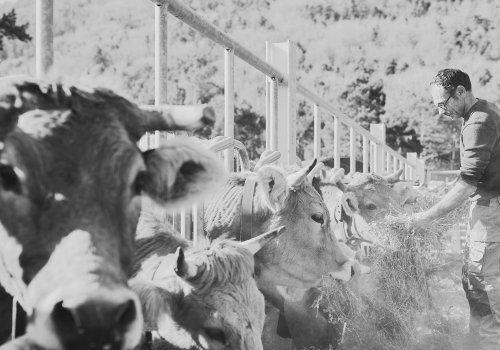
Farmers and their customers who wanted raw milk had to get creative. If selling it directly was off the table, they figured out they could “sell” or “lease” a share of a cow instead. Boom! Suddenly, you’re not a buyer; you’re an owner, and the law can’t touch you.
During the early 2000s, some dramatic moments put cow sharing in the spotlight. In California, armed agents once raided a small dairy farm, confiscating raw milk and cheese, shocking the local community.
In Michigan, farmers fought tooth and nail in court to defend their cow share programs, arguing they had every right to provide for their neighbors. These fights turned cow sharing into more than just a health trend. It became a rallying cry for food freedom and self-reliance, especially for preppers who value staying independent.
Why Do People Like Cow Sharing?
Talk to anyone who’s into raw milk, and they’ll rave about why it’s worth the hassle. It tastes better, for one. Plus, it’s packed with natural probiotics, enzymes, and vitamins that pasteurization strips away. For a lot of folks, it’s like a superfood for gut health and immunity, key for staying strong in tough times.
Speaking of superfoods, it’s worth remembering that not all survival nutrition has to come from cans or buckets. During the Cold War, the U.S. military developed a “Doomsday Ration” meant to keep Americans alive through a nationwide crisis.
It wasn’t gourmet—it was engineered to be dirt cheap, last for decades, and deliver just enough calories to keep someone alive for $0.37 a day. You can check out the exact recipe here.
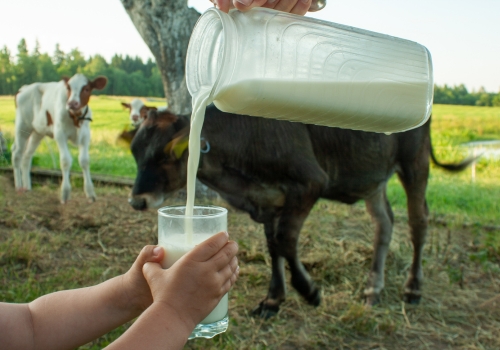
With a cow share, you’re not just grabbing a jug off the shelf. You know exactly where your milk or beef comes from, what the cow ate, and how it was treated. In a world where food recalls and sketchy supply chains are all too common, that kind of control is a big deal.
Cow sharing is also about keeping it local. You’re putting money straight into the hands of small farmers who share your values, not some faceless corporation. Plus, you’re building real connections with those farmers, relationships that could be a lifeline if SHTF.
Is Cow Sharing Safe?
Let’s be real! Mention raw milk or cow sharing, and you’ll get some raised eyebrows and warnings like, “You’re gonna get sick!” or “That stuff’s dangerous!” There’s a bit of truth there: raw milk can carry bacteria like E. coli or Salmonella if the farm’s sloppy. But here’s the thing: most of the risk comes down to bad hygiene or sketchy farm practices, not the milk itself.
Truth is, a lot of small farms running cow shares are obsessed with cleanliness way more than some giant industrial dairies. These farmers know their customers by name and can’t afford to mess up their reputation. Plus, when you join a cow share, you can usually visit the farm, check out the milking setup, and even meet the cow. Try getting that kind of transparency from a big-brand milk jug at the store.
Most cow share programs encourage or even require you to get up close and personal with the farm. You can see the milking equipment, check how the cows are fed, and watch how the milk’s stored. A lot of farms test their milk regularly and keep detailed records for their members.
For preppers, this is huge. You’re not just trusting a label or some government inspector. You’re seeing exactly what goes into your food. That hands-on knowledge lets you make sure everything’s up to your standards, no blind faith required.
What Is Every State’s Cow Sharing Policy?
Cow sharing laws are a patchwork across the U.S., and you’ve got to know where your state stands before jumping in. Here’s a quick rundown (but always double-check local laws, as they can shift fast):
A C D F G H I K L M N O P R S T U V W
#1. Alabama
- Cow shares operate in a gray area (no explicit law); raw milk sales are banned.
#2. Alaska
- Cow shares are legal; raw milk sales are banned.
#3. Arizona
- Raw milk sales are legal (strict labeling); cow shares are actually illegal.
#4. Arkansas
- On-farm raw milk sales are legal with restrictions; cow shares operate in a gray area (not clearly protected).
#5. California
- Licensed raw milk sales are legal; cow shares are legal.
#6. Colorado
- Cow shares are explicitly legal; raw milk sales to the public are banned.
#7. Connecticut
- On-farm raw milk sales are legal with permit; cow shares are legal.
#8. Delaware
- Both raw milk sales and cow shares are illegal.
#9. Florida
- Cow shares are illegal; raw milk sales for human consumption are banned (only pet food).
#10. Georgia
- Raw milk for human consumption is legal with Grade A permit (since 2023); cow shares are illegal.
#11. Hawaii
- Both raw milk sales and cow shares are illegal.
#12. Idaho
- Cow shares are legal; raw milk sales allowed with small herd exemption & regulation.
#13. Illinois
- Cow shares are legal; raw milk sales are allowed on-farm if consumer brings container.
#14. Indiana
- Cow shares operate in a gray area (some small-scale agreements tolerated); raw milk sales are banned.
#15. Iowa
- Both raw milk sales and cow shares are illegal.
#16. Kansas
- On-farm raw milk sales legal (must be unadvertised); cow shares are legal.
#17. Kentucky
- Cow shares are legal; raw milk sales are banned.
#18. Louisiana
- Both raw milk sales and cow shares are illegal.
#19. Maine
- Cow shares and raw milk sales are legal under local food sovereignty ordinances.
#20. Maryland
- Both cow shares and raw milk sales are illegal.
#21. Massachusetts
- Cow shares are illegal; raw milk sales allowed on-farm with permit.
#22. Michigan
- Cow shares are legal; raw milk sales are banned.
#23. Minnesota
- Cow shares operate in a gray area; raw milk sales allowed if picked up on-farm by the consumer.
#24. Mississippi
- Both raw milk sales and cow shares are illegal.
#25. Missouri
- Cow shares are legal; on-farm raw milk sales are allowed with limits.
#26. Montana
- Cow shares operate in a gray area (not explicitly legal); raw milk sales are banned.
#27. Nebraska
- Cow shares are legal; limited on-farm raw milk sales are allowed.
#28. Nevada
- Cow shares are legal; raw milk sales need county approval (very restricted).
#29. New Hampshire
- Both raw milk sales and cow shares are legal.
#30. New Jersey
- Both cow shares and raw milk sales are illegal.
#31. New Mexico
- Raw milk sales legal with permit; cow shares are legal.
#32. New York
- Cow shares are legal; raw milk sales allowed only on-farm with permit.
#33. North Carolina
- Herd shares are legal since 2018; raw milk sales are banned.
#34. North Dakota
- Cow shares are legal; raw milk sales are banned.
#35. Ohio
- Cow shares are legal; raw milk sales are banned.
#36. Oklahoma
- On-farm raw milk sales legal; cow shares operate in a gray area (some agreements tolerated).
#37. Oregon
- Limited raw milk sales allowed from small farms; cow shares are legal.
#38. Pennsylvania
- Raw milk sales legal with permit; cow shares are legal.
#39. Rhode Island
- Both cow shares and raw milk sales are illegal.
#40. South Carolina
- Raw milk sales legal with permit; cow shares are legal.
#41. South Dakota
- Cow shares operate in a gray area; raw milk sales restricted and heavily regulated.
#42. Tennessee
- Cow shares are legal; raw milk sales are banned.
#43. Texas
- On-farm raw milk sales legal; cow shares operate in a gray area (some tolerated).
#44. Utah
- Raw milk sales legal with permit; cow shares are legal.
#45. Vermont
- Both raw milk sales and cow shares are legal.
#46. Virginia
- Cow shares are legal; raw milk sales are banned.
#47. Washington
- Raw milk sales legal with permit; cow shares are legal.
#48. West Virginia
- Cow shares legal since 2016; raw milk sales are banned.
#49. Wisconsin
- Both cow shares and raw milk sales are illegal.
#50. Wyoming
- Raw milk sales allowed under herd-share law (“cow shares” legal framework); cow shares are legal.
Bottom line: Cow sharing’s a mixed bag across the U.S, as follows:
- Clearly legal cow shares: AK, CO, CT, ID, IL, KS, KY, MI, MO, NE, NV, NH, NM, NY, ND, OH, OR, PA, SC, TN, UT, VT, VA, WA, WV, WY, NC.
- Illegal cow shares: DE, FL, GA, HI, IA, LA, MD, MA, MS, NJ, RI, WI.
- Gray area / tolerated: AL, AR, IN, MN, MT, OK, SD, TX.
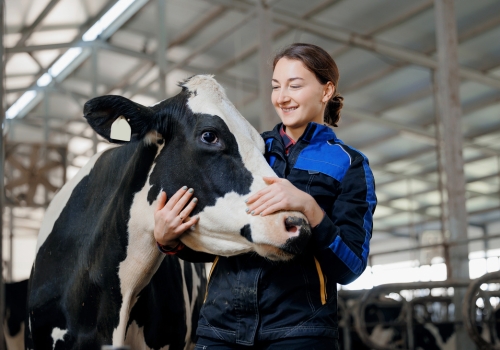
Why Is Cow Sharing Illegal in 9 States?
Well, you probably guessed it: health officials aren’t exactly fans of raw milk. They argue that raw milk poses significant risks because it can harbor dangerous pathogens such as E. coli, Salmonella, Listeria, and Campylobacter, which can lead to serious foodborne illnesses, particularly in vulnerable populations like children, the elderly, and those with compromised immune systems.
Additionally, some states view cow sharing as a loophole that circumvents strict dairy laws, leading to bans to maintain control over milk production and sales.
At the end of the day, it’s about weighing the risks against the rewards. For a lot of folks, the nutritional boost and independence of cow sharing outweigh the concerns, especially if you’ve vetted the farm yourself.
How Cow Sharing Can Help Preppers
Cow sharing hooks you up with a steady flow of raw milk and sometimes beef, without depending on grocery stores or shaky supply chains. It’s like a secret weapon for keeping your food stash secure and even giving you something valuable to trade when things go sideways.
How to Get Started
Start by tracking down a local farm that offers cow or herd shares. Before signing up, visit the farm and ask: Are the cows grass-fed and healthy? How often is the milking equipment cleaned? Do they test milk for bacteria? Look for red flags like dirty barns or sick-looking animals. A good farmer will be happy to show you around and answer questions.
If everything’s all right, you’ll sign a simple agreement that makes you a part-owner of the cow. No, you don’t need to build a barn! Just swing by to pick up your milk. Better yet, you can team up with friends or neighbors to split the costs. That’s if you trust them, of course.
Costs vary, but expect to pay $50–$100 upfront for a cow share, plus $20–$50 a month for upkeep, depending on the farm and your share size. It’s a great way to save some cash and build a tight-knit group you can rely on.
Storing Your Haul
Raw milk doesn’t last long, so you’ve got to get creative. Turn it into butter, cheese, yogurt, kefir, or ghee; stuff that keeps for ages and still packs a nutritional punch. If your share includes beef, you’re in luck. Preserve it by canning, curing, smoking, or making pemmican (think old-school survival jerky).
But here’s the catch: without the right storage, even your best-preserved goods can spoil, get raided by pests, or go bad in a heatwave. Propane fridges or basic root cellars are solid off-grid options, but if you’re serious about keeping your food secure and fresh for months or even years, you need something better.
 That’s where a proper underground cellar comes in. Picture a hidden, rock-solid space in your backyard that keeps your cow share haul, home-canned goods, root veggies, grains, and water safe from spoilage, critters, and prying eyes. A well-designed cellar holds steady temperatures and humidity, just like the old-school root cellars our grandparents relied on.
That’s where a proper underground cellar comes in. Picture a hidden, rock-solid space in your backyard that keeps your cow share haul, home-canned goods, root veggies, grains, and water safe from spoilage, critters, and prying eyes. A well-designed cellar holds steady temperatures and humidity, just like the old-school root cellars our grandparents relied on.
It’s your ticket to making sure your food stays edible long after the grid’s down or grocery stores run dry. Enter The Easy Cellar, a game-changing solution for preppers and anyone who wants true food independence. Built just a few feet under your yard, it’s designed to store all your cow share goodies in perfect conditions without needing electricity.
Drawing on time-tested designs, it’s a modern twist on the classic root cellar, giving you a discreet, secure spot to stockpile everything from your homemade ghee to emergency water supplies.
❗Best part? You can build it yourself for under $400 in less than a week.
No fancy tools or expensive contractors required. It’s affordable, straightforward, and built to keep your cow share haul safe.
Bartering When SHTF
When the world falls apart, dairy and meat become pure gold. A little jar of homemade butter, a wedge of cheese, or some beef jerky? That’s calorie-dense, hard-to-find trade bait. In a collapse, those goodies could get you ammo, tools, or whatever else you need to keep going. Speaking of bartering…
The Amish Case
In many Amish communities, cow sharing (or herd sharing) is a natural part of daily life. Amish families often keep dairy cows to supply raw milk, butter, cheese, and other fresh dairy products for their own tables. They milk cows by hand and store the milk in cooled churns—no pasteurization, no modern machinery, just rich, creamy nutrition straight from the source.
Instead of formal contracts, Amish families typically share milk informally with relatives and neighbors, strengthening tight-knit community bonds. However, some Amish farmers run official cow share programs, especially in states where selling raw milk directly is restricted. By owning a “share” of the cow, outsiders can legally access raw milk from Amish farms—like those in Lancaster County, Pennsylvania, supplying fresh milk to big cities.
Beyond dairy, Amish sometimes extend this model to beef, dividing whole cows among families to fill freezers with high-quality, local meat.
Want to learn more? In The Amish Ways Book, former Amish member Eddie Swartzentruber reveals secret details on Amish bartering with food (including cow sharing products), long-lasting preservation methods, community recipes, and how these survival practices are deeply woven into their way of life.
Final Thoughts on Cow Sharing
Cow sharing isn’t perfect. It takes time to find a good farm, and those weekly milk pickups can be a hassle if you’re far from the farm. Plus, raw milk spoils fast if you don’t process it quick.
And yeah, the legal gray areas in some states mean you gotta stay sharp. But for most preppers, the payoff (fresh, independent food) is worth the extra effort. Whether your state’s all-in on cow sharing or cracks down hard, the goal stays the same: secure your food.
What do you think of this idea? Would you dive into cow sharing to secure your own raw milk supply? Let’s hash it out in the comments!
Cow sharing helps you achieve food independence, true. But real self-reliance means that you also need a reliable, endless source of clean water. That’s where this backpack-sized water generator comes in. It pulls up to 50 gallons of pure, drinkable water per day, straight out of thin air! No pipes, no wells, no worries about what’s lurking in your tap. It’s real, it’s powerful, and it’s the perfect partner to your food self-sufficiency plan.
You may also like:
Stop Throwing Away Spoiled Milk! Do This Instead
What Item You Should Remove from Your Pantry Immediately (Video)
This Is How You Can Live Without Refrigeration

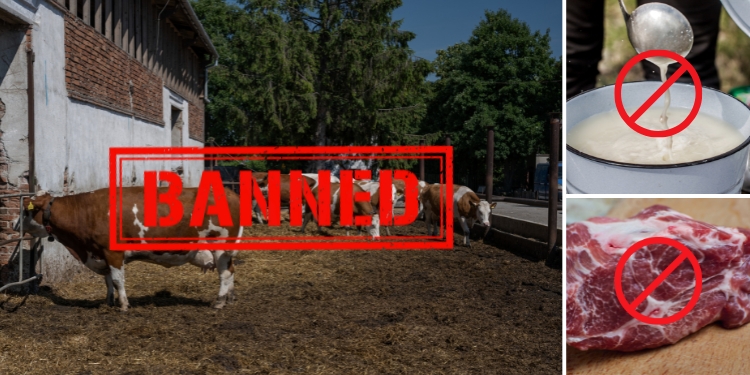
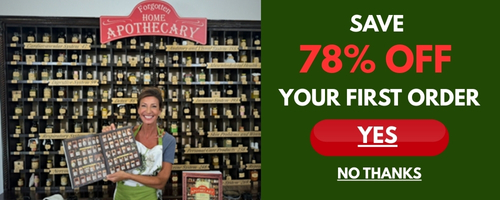
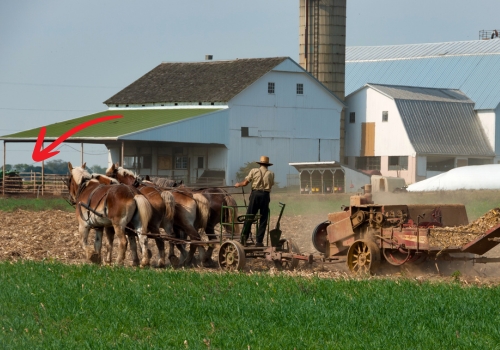









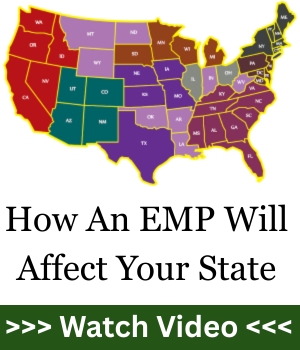

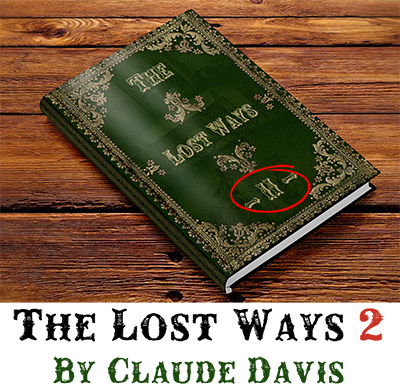
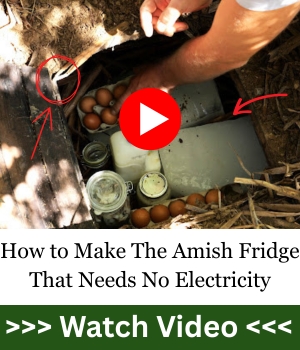








There are several raw milk sources in Florida. Farmer Joe’s in Cape Coral has it in their dairy department. Trick is the label says it is not for human consumption! They sell out regularly. It’s at the end of a cooler away from the processed milk. It is more expensive, but, wow, is it good.
I checked and there are plenty of places to get it if you want it.
I learned today from Dr. Mercola, that Google has made it impossible for anyone to find him. Alternative medicine is nearly banned.
I never use Google for searches.
Anyway, for those who like raw milk, you can find it in stores here and there.
It’s worth it!
I have been drinking 1 Gal. of whole raw milk a day for over 10 years. I am 65 now in very good health. I buy it at our local co-op from a local dairy. On the one hand expensive $12 per gal. on the other hand I eat less volume of food ie less food expense! I have not had flues or colds for years! Here in Wa State the TARDS are constantly attacking any & everything containing comonsence. I hope the WOKE continue to protect thier health via jabs. Evolution through CULLINIZATION. Isn’t Freedom of choice wonderful! GC
Actually a “stash” of beans and rice DOES cut it. I can eat rice and beans forever. A combination of rice and beans is pretty well a complete protein. A person should also have supplementary proteins on hand like canned fish and canned meat. Not a big fan of milk to begin with so I don’t care. Also don’t want to deal with the nuisance of taking care of a cow. Unless you’re set up to take care of a cow and store raw milk properly it’s really not worth the bother. Even more difficult if you’re living on a postage sized piece of property in the suburbs. 😉
Howdy, Armin! You’re absolutely right that rice and beans can keep you going. And yes, they’re a solid survival staple. In fact, in the short term, they’re one of the best low-cost ways to stay fed and get basic protein.
But survival isn’t just about “not starving.” Over the long haul, your body needs more than just calories and incomplete proteins.
You need fats, a wide range of vitamins (like A, D, and B12), enzymes, and other nutrients that are hard to get from shelf-stable foods alone. That’s where animal products, like milk, butter, and cheese, become maybe even vital.
Now, cow sharing isn’t about owning a cow in your backyard or churning your own butter. It’s about community-based access.
You’re essentially investing in part of a cow that’s cared for by someone with the space, experience, and setup to handle it properly.
In return, you get a steady source of fresh, raw milk and possibly other dairy products, without having to muck stalls or store hundreds of gallons of milk yourself.
For people living in the suburbs (or even semi-rural areas), I reckon this is a practical way to add long-term resilience to your food supply.
You might not be a big fan of milk, and that’s totally fair, but for those who want a more complete nutritional profile and a renewable, local source of food, I think cow sharing is worth a second look.
Thanks for reading and commenting, it’s much appreciated!
Beans and rice are ok, but sometimes I just want a good burger. Tonight we are having some of the standing rib roast I cooked up recently. Freezes beautifully. I get my beef from a place here in Florida – family owned. Not a big place. Grass fed, finished and all that. Yes, it is more expensive, but we find a smaller portion is more satisfying and tastes so much better. It evens out. As Julia Child once said – something like-“I am a carnivore.” She found that after she switched to eating real meat, she lost weight and was freed from the mental issues she previously suffered.
You said what I was going to say! Good job!
Cool. Thanks.
Howdy from high in the desert swamp,
Interesting reading the last few installments. While trying to survive the very accurate depiction of the EMP aftermath, to lack of protein food…
Milk intolerance is in two people in my circle. No milk, cheese and butter is iffy at times for them. Can I do without? Yes, since it helps them.
I read these while I am reading The Prairie Traveler. It was written in 1858 as a guide for people crossing Texas from the Gulf coast ports to places West. There is a section on what food to take with you. These people for the most part obviously survived the months long trip. Currently central Texas is flooding. This today happened then as well. People thrived on dehydrated, canned and smoked food. Food stored in salt. This is a good article and I hope one day to find a source for raw milk. I never thought I would ever pull for a Kennedy. I’m in strange territory pulling for RFK Jr to get the food and medicine cleaned up. He stated he wants raw milk to be more easily accessed. I wish him well. The Prairie Traveler is a really interesting guidebook. Pemmican is on the list. Many staples. Beans. Flour, sugar… Food issues didn’t do people in near as much as bad water if, you prepared correctly ahead of time. They wouldn’t know a milk issue or an EMP because what they had was necessity to life. If you want to talk about a hard time?
No chocolate.
Do I even want to go on living?? (Jeopardy music)
Remember The Alamo
Remember 9/11
Remember North Carolina
Remember to have your soul prepared
I thought I was lactose intolerant. Then, I went to Europe where they don’t put all the junk in their dairy. Dairy was so satisfying without any of the side effects. I find that I can happily drink raw milk that hasn’t been adulterated. I know that buttermilk can be frozen. I wonder if there is a way to receive raw milk that way? As with other real foods, it doesn’t take as much to be satisfying.
https://luckylayla.com/
Right down the street from my house.
That’s right. In the old days folks relied on what they had and adapted fast. Cow sharing or raw milk isn’t for everyone, but it gives many preppers options and independence from the store shelf. And yes, water was and still is the real killer if you’re not careful.
Try goats milk it’s naturally pasteurized and has casin-2 so it’s very easy on the stomach and quick to digest. Sheep milk is the most nutritious.
For the food allergies etc. it could be treated by a carnivore-keto diet.
Go on YouTube and look for Dr.Ken Berry, he specializes in carnivore and is a medical doctor also.There are a few others with vast experience with carnivore keto diets and nutritional therapy etc. The all meat diets have worked wonders for some people with extreme immune system disorders and succeed where others fail=regular MD’s.
There are a few cases discussed on TEDx talks, and they all say the same thing.
Just trying to fill space I guess.A good quality powered
milk has a ten year plus shelf life not to mention freeze
dried beef.
There is just to much that can go wrong with owning
a cow.Sure a medium rare rib eye would be nice, but
we’re talking about a SHTF situation aren’t we.
A #10 can of any meat from Mountain House is much
less worry and work.You’ll never need to call the Vet
to treat the cow for scours.
Powdered milk and freeze-dried meat are great backups and less hassle than a cow, no doubt. The way I see owning a cow, I think it’s about self-reliance and long-term sustainability if supply lines truly collapse. Different tools for different folks, maybe?
Chuck,
If you are talking about TEOTWAWKI then I think a cow would be better long term. Not only for the fresh vs canned but maybe you could get some poo for the garden.
Hey Chap, the prairie traveler is an interesting read and one of my favorites. The book Hardtack and Coffee will give a good account of a soldier’s life during the civil war. Life of a Soldier On The Western Frontier is another interesting read as is Buffalo Soldiers; The part about using bone marrow to butter bread kind of stuck with me for no real reason. No chocolate would be a tough row to hoe. I would imagine the only place to find that would be either Ft Hall or on the southern route, Bent’s Fort, Taos or Santa Fe, and then, only maybe.
Herd Sharing is legal in NC. An ammendment to the NC Farm Act in 2018 “re-legalized” the practice.
*North Carolina’s dairy farming laws, specifically the NC Farm Act of 2018, enable this “herd share” arrangement by defining ownership of the animal as the legal basis for receiving raw milk, rather than a direct sale of the milk itself *
Thanks for clarifying (now it’s in the article too). NC is one of the more flexible states now, but others still make it tricky or outright illegal. It’s important for people to check local rules before they jump in.
People around here on small acreage stopped keeping a milk cow or a couple of steers years ago, just not worth the time and money. Goats, sheep, ducks, geese and pigs are now the favorites. Chickens everywhere. And we all have gardens so we can learn new ways to kill a garden every year.
Milk has about the same nutritional profile as a can of Dr.Pepper with a tablespoon of lard in it.
Not sure if I’m repeating someone’s post, but a work around that I’ve seen in Pennsylvania and Florida is for the dairy to put a label on the raw milk or products made from raw milk that reads: “Due to the requirements of Florida Law and the Pasteurized Milk Ordnance, this product is labeled Feed for Calves-Not for Human Consumption
I just recently started drinking raw milk…after a couple weeks of stomach rumbling, no pains or cramps, just some pretty strange noises, all is good!
That is how it is labeled at the store where I purchase it in Florida. It’s in the same dairy cooler, but WAY down at the end away from the processed milk.
Whatever it takes!
That’s right! Labeling raw milk as “not for human consumption” is a common workaround in many states, actually. Glad to hear your gut adapted. Many folks do get used to raw milk after a short adjustment. Good on you for giving it a shot.
For over a year, Georgia has allowed raw milk sales without the pet food label if the supplier undergoes a state certification.
Thanks for adding that. Georgia’s move shows things are slowly changing. State certification can make raw milk safer and more accessible, which is the kind of freedom many of us want.
I LOVE RAW MILK!
Cow sharing and selling the milk illegal because the governments aren’t making any money.
I might be wrong, but I think Louis Pasteur’s work was quite important, and adopted by law because, back then, people, including farmers, didn’t know about the dangers of unhygienic, careless and unsafe practices in handling milk, so sickness, and sometimes death were common. Pasteur discovered the health benefits, under these conditions, of his heat process.
Pasteur, or somebody might have, instead, taught farmers the dangers of poor handling. To make it stick, he might have got the general public taught, so raw milk and raw milk products could be safe. Instead, we got laws, out of ignorance, and out of evasion of known facts about handling, against raw milk, and mandating Pasteurization.
I’m sure this isn’t the whole story, but it’s the necessary beginning, since we have raw milk banned in many places and a nationwide checker board and ever changing kalidoscope (sp?) of often unproductive laws that can be impossible to obey.
You’re spot on about Pasteur! His methods saved lives when hygiene was poor. But today, with careful handling and small-scale local farms, raw milk can be safe if folks are responsible. The problem is blanket laws that remove choice instead of educating people. Well said! Thanks for joining the conversation!